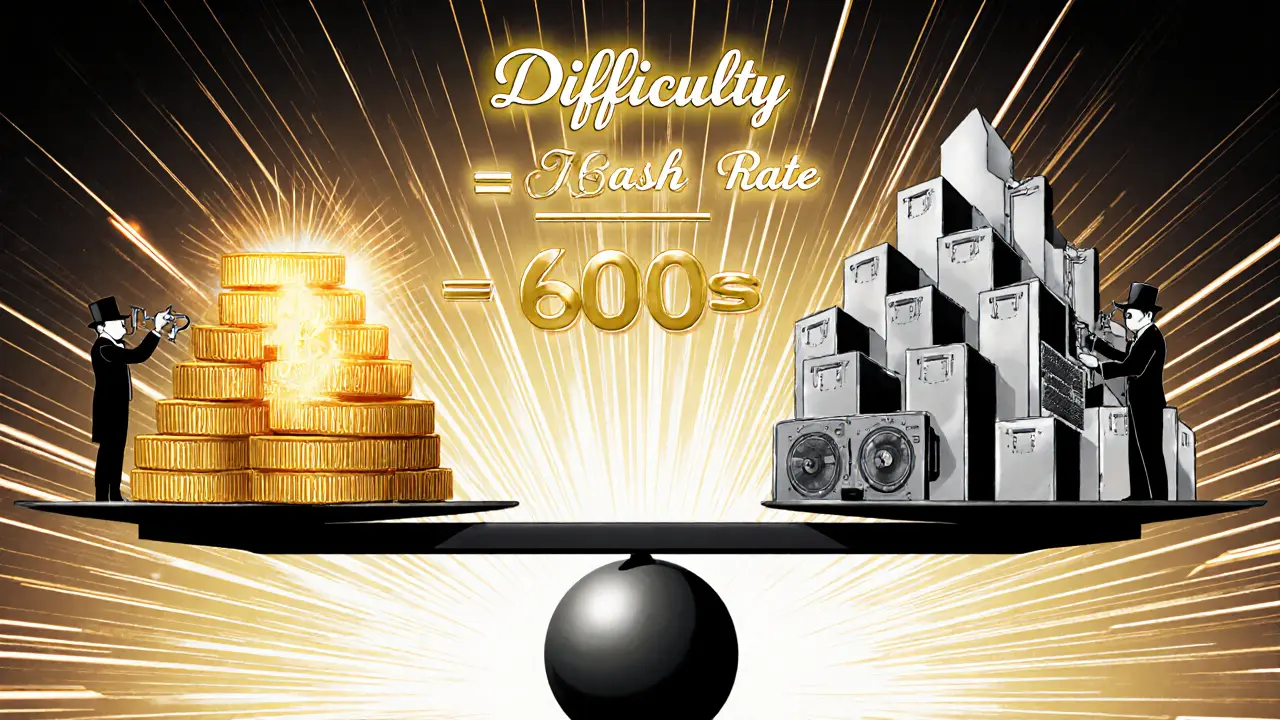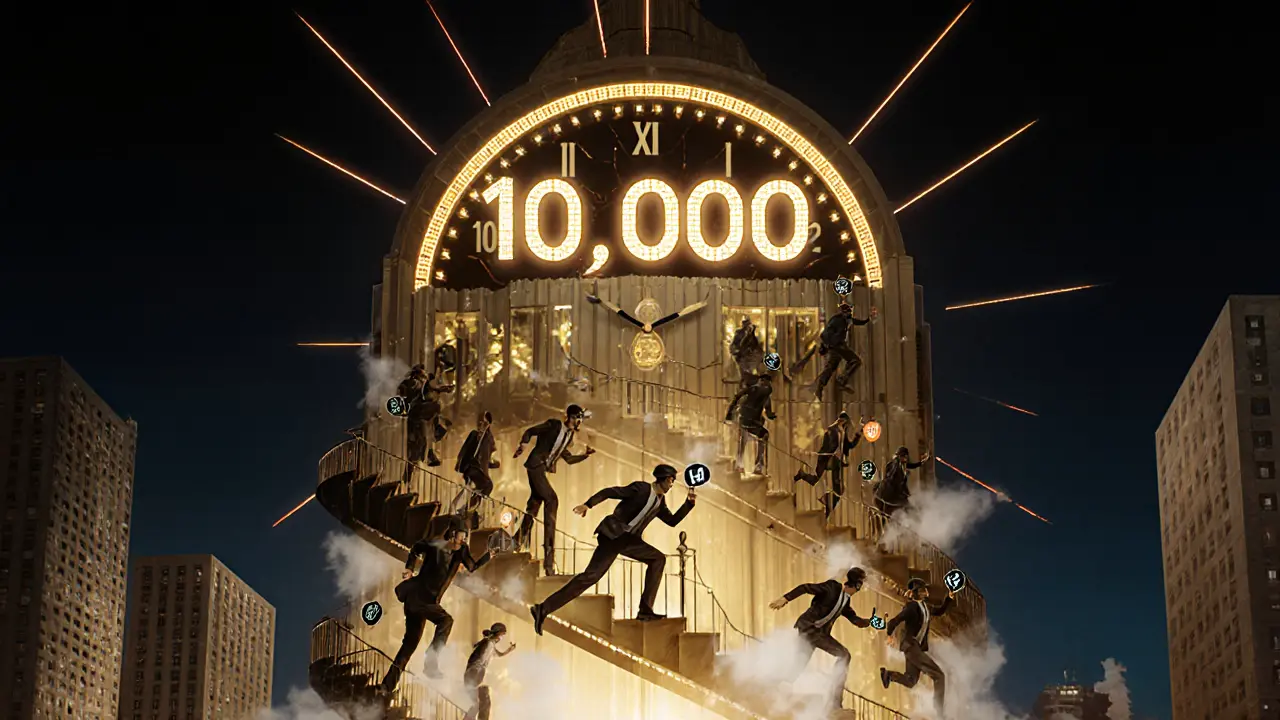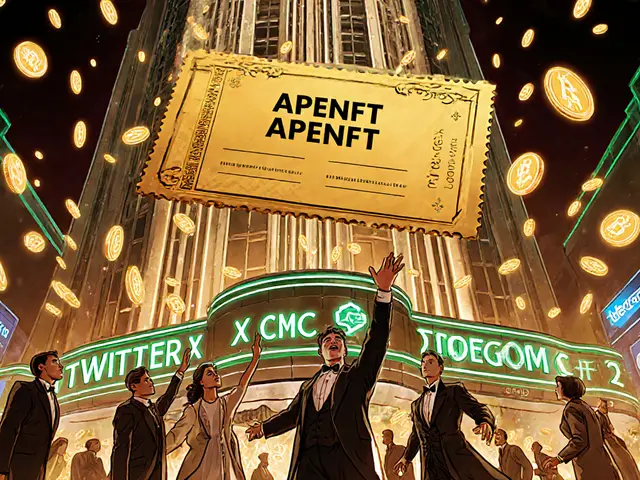Bitcoin Mining Profitability Calculator
When you hear that Bitcoin’s mining difficulty just hit a new all-time high, what does that actually mean for the people mining it? It’s not just a number on a screen-it’s the network fighting to stay balanced. Every 10 minutes, a new Bitcoin block is supposed to be added. No more, no less. That’s the rule. And the system enforces it automatically, without any person pressing a button. The secret? The relationship between hash rate and mining difficulty.
What Is Hash Rate?
Hash rate is the total computing power being used by everyone mining Bitcoin at any given moment. Think of it like a massive global race where millions of computers are trying to solve the same puzzle. The faster they solve it, the higher the hash rate. It’s measured in hashes per second-now usually in terahashes (TH/s) or petahashes (PH/s). One PH/s equals one quadrillion calculations per second. As of late 2025, Bitcoin’s network hash rate is over 1,000 PH/s. That’s more computing power than the top 500 supercomputers in the world combined.This number doesn’t stay still. When more miners join the network-whether they’re big companies buying new ASICs or individuals setting up rigs in their garages-the hash rate goes up. When electricity prices spike or Bitcoin’s price drops, some miners shut down. The hash rate drops. And every time it moves, the network responds.
What Is Mining Difficulty?
Mining difficulty is how hard it is to find a valid block. It’s not a fixed number. It changes automatically every 2,016 blocks-roughly every two weeks. The goal? Keep block times at 10 minutes, no matter how many miners are active.Here’s how it works: miners are looking for a specific hash-a string of numbers and letters-that meets a certain target. The lower the target, the harder it is to find. That’s difficulty. If the network’s hash rate shoots up, blocks would be found too fast. So the system raises the difficulty, making the target harder to hit. If hash rate crashes, difficulty drops so blocks don’t take hours to appear.
The formula is simple: time = difficulty × 2³² ÷ hash rate. Plug in the numbers, and you get the average time it takes to mine a block. If the result is less than 600 seconds (10 minutes), difficulty goes up. If it’s more, difficulty goes down.
How Hash Rate Changes Trigger Difficulty Adjustments
The system doesn’t guess. It looks back at the last 2,016 blocks and calculates the actual average time it took to mine them. If those blocks came in every 8 minutes instead of 10, difficulty jumps by about 25%. If they took 12 minutes, difficulty drops by the same amount.This isn’t theoretical. In early 2024, Bitcoin’s price surged past $70,000. Miners rushed to buy new ASICs. The hash rate jumped 60% in three months. Within weeks, difficulty spiked by 28%. Miners who hadn’t upgraded their hardware suddenly saw their daily earnings cut in half. Some went offline. Others doubled down.
It’s a feedback loop: higher price → more miners → higher hash rate → higher difficulty → lower profits per miner → some quit → hash rate drops → difficulty drops → profits rise again. The system self-corrects. No central authority. No meetings. Just code.

Why This Matters for Miners
If you’re mining Bitcoin, you’re in a race where the finish line keeps moving. Your ASIC miner might have been profitable at 100 TH/s and difficulty 50 trillion. But if the network hash rate doubles and difficulty jumps to 100 trillion, your same machine now takes twice as long to find a block. Your rewards halve. Your electricity bill stays the same. You lose money.That’s why large mining firms like Marathon Digital, Riot Platforms, and CleanSpark don’t just buy hardware-they buy it in waves timed around difficulty adjustments. They wait for difficulty to drop, then deploy new machines. They lock in cheap power contracts in Texas, Georgia, or Kazakhstan. They know that if they’re not faster and cheaper than the average miner, they won’t survive the next adjustment cycle.
Smaller miners? They often join mining pools. Instead of trying to find a block alone, they combine their hash power with others. When a block is found, rewards are split based on how much each miner contributed. It’s less glamorous-no jackpot-but it’s steady. Solo mining is nearly impossible now unless you’re running thousands of ASICs.
Hardware, Energy, and Profitability
Not all miners are equal. A new Antminer S21 can do 200 TH/s using 3,250 watts. An older S19 does 95 TH/s using 3,250 watts. The newer model is more than double as efficient. That’s the edge. If you’re using old hardware and your neighbor has a newer one, you’re already behind before the difficulty even adjusts.Energy cost is the biggest variable. If you’re paying $0.15 per kWh, you’re competing against miners in Texas or Sweden paying $0.03. The difference isn’t small-it’s survival. A miner with cheap power can stay profitable even when difficulty is at record highs. One with expensive power shuts down.
That’s why mining is becoming more centralized-not because of regulation, but because of economics. Only those with access to cheap, reliable energy and latest-gen hardware can compete. The days of mining Bitcoin with a gaming PC are long gone.

Network Security and Hash Rate
Higher hash rate doesn’t just help miners-it protects the whole network. Bitcoin’s security comes from how much computing power it takes to override it. To launch a 51% attack, you’d need to control more than half of the global hash rate. At 1,000 PH/s, that would cost billions in hardware and electricity. It’s not just hard-it’s economically irrational.That’s why the hash rate-difficulty relationship is Bitcoin’s secret weapon. It doesn’t just keep block times stable. It makes the network stronger the more people join. The more miners, the harder it is to break. The harder it is to break, the more people trust it. And the more people trust it, the more miners come in. It’s a virtuous cycle.
What’s Next?
Looking ahead, hash rate will keep climbing. New ASICs are coming with better efficiency. Institutional investors are setting up mining farms. Renewable energy projects are being built just to power them. Difficulty will keep rising with it.But there are risks. If Bitcoin’s price crashes hard, miners could shut down fast. Hash rate could drop 30% in a month. Difficulty would follow-but not instantly. There’s a lag. That means miners could lose money for weeks before the system catches up. That’s why many now use predictive tools to forecast difficulty and plan hardware purchases months in advance.
Some experts wonder if the two-week adjustment cycle is too slow. What if hash rate doubles in a week? Could the network handle it? There are proposals to adjust difficulty more often-every 1,008 blocks, or even daily. But changing Bitcoin’s core rules requires near-unanimous agreement. That’s hard. So for now, the system stays as it is: simple, slow, and incredibly robust.
What You Need to Know
If you’re thinking about mining Bitcoin today, here’s the reality:- Hash rate and difficulty are locked together-when one goes up, so does the other.
- Profitability isn’t about the price of Bitcoin alone. It’s about your hardware efficiency and electricity cost.
- Older ASICs are becoming obsolete. If your miner is over two years old, it’s likely losing money.
- Joining a mining pool is the only realistic way for small operators to stay in the game.
- Difficulty adjusts every 2,016 blocks, not every two weeks. If hash rate spikes, adjustments happen faster.
Bitcoin’s design is elegant because it doesn’t need humans to manage it. The math does the work. The network adjusts itself. And as long as people keep mining, it keeps getting stronger.
Does higher hash rate mean more Bitcoin is created?
No. The number of new Bitcoins created per block is fixed at 3.125 BTC (as of 2024 after the halving). Higher hash rate doesn’t change how much Bitcoin is mined-it just makes it harder to find each block. The total supply cap of 21 million remains unchanged.
Can mining difficulty go down?
Yes. If miners shut down and the network hash rate drops significantly, difficulty will automatically decrease. This happened in 2022 after China banned mining and the global hash rate fell by nearly 50%. Difficulty dropped by 30% over the next adjustment cycle to keep block times at 10 minutes.
Why do mining pools exist?
Solo mining is nearly impossible today because the difficulty is too high. Mining pools let small operators combine their hash power to increase their chances of finding a block. When a block is found, rewards are shared based on each miner’s contribution. It’s less risky and more predictable than going it alone.
How often does mining difficulty adjust?
Every 2,016 blocks, which typically takes about two weeks. But if miners join or leave quickly, it can happen faster or slower. For example, if the network hash rate doubles in 10 days, difficulty will adjust after the next 2,016 blocks-no matter the calendar date.
Is Bitcoin mining still profitable in 2025?
It depends. For large operations with cheap electricity and new ASICs, yes-especially when Bitcoin’s price is above $50,000. For individuals with old hardware or high electricity costs, no. Profitability calculators show that only the most efficient miners break even when difficulty is at record highs.



